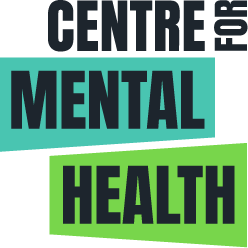By Dr Yasmin Ahmadzadeh
Mental health research should help us to better understand, promote and support all of our mental wellbeing. To achieve this, it must include all sections of society. But how do we measure that?
When researchers describe the populations that they have studied, they typically refer to people’s race, ethnicity, or ancestry, alongside other standard descriptions such as age and gender. The problem is, the categories used for measuring race, ethnicity, and ancestry remain inconsistent and can be harmful. When researchers use these terms incorrectly, they reinforce and perpetuate inaccurate and often racist narratives.
Race, ethnicity and ancestry are related, but they are not all the same. They should not be used interchangeably to define groups of people in research. Unfortunately, they often are.
Race categories were developed as a taxonomic grouping of humans during the heyday of European colonialism. They are typically associated with physical characteristics such as skin colour or hair texture (e.g., ‘Black’ or ‘white’). They are not valid indicators for any underlying biological differences between us (e.g., genetics). Racial categories are a social construct. There are no observable, biological measures that can be used to reliably classify people within racial groups. Race is the invented product of racism.
Ethnicity refers to groupings based on cultural expression and identification (e.g., ‘Latino’, ‘European’, ‘Chinese’). This can include factors such as shared ancestry, language or traditions. As with race, ethnicity is a social construct. There is no consensus on what constitutes an ethnic group, and membership is self-defined and subjectively meaningful only to the person concerned.
Ancestry typically refers to the geographical origin of populations (e.g., ‘European ancestry’ or ‘African Americans’). It can also be used in terms of the heritage or descent of a group (e.g., ‘Ashkenazi Jewish ancestry’). Ancestry is considered the most objective of the three defined terms, but it is not without flaws. Populations are never homogenous in their ancestry. There is no such thing as a population with a single direct (or, as some have put it, ‘pure’) ancestry. Therefore, the borders that we place around ancestries are arbitrary and, again, socially constructed.
The ‘ethnic group’ categories currently recommended for use in the UK (by the ONS) are outdated and unsystematic. They were not designed for research. They pool a range of racial, ethnic and ancestry terms within single categories (e.g., ‘Black/African/Caribbean/Black British’). They include some cultural groups (e.g., ‘Arab’, ‘Gypsy or Irish Traveller’), but not others. Some nationalities are listed (e.g., ‘Irish’ or ‘Indian’), while others are clustered across large geographical regions (e.g., ‘African’ or ‘Asian’) or by skin colour (e.g., ‘any other white background’). The options for ‘Mixed/Multiple’ groups are limited. Personally, I must select mixed ‘white and Asian’ – so my British family are described by colour and my Iranian family by continent.
We cannot remain complicit by continuing to use harmful categories which fail to represent people equally and fairly. We need to develop new tools for mental health research that enable us to identify and address racial injustice and inequity. We must not stop talking about race, but we must understand and use racial terms correctly.
So here’s a call for action in mental health research.
First, we need to correct our vocabulary:
- Racial terms (e.g., ‘Black’) are only appropriate when discussing the racialisation of participants. (Read more about why many are now deciding to capitalise the B in Black).
- By using racial categories in the wrong context, we risk reinforcing the notion that they are biologically and scientifically valid.
- Stop referring to race, ethnicity or ancestry as ‘risk factors’ for mental health problems. There is no evidence to suggest that ethnicity is a causal risk factor for mental health problems. There is evidence to suggest that racism and marginalisation are risk factors.
- Stop using the term ‘Caucasian’ in research. This is a pseudoscientific term, derived from an 18th century racist classification system. You should use either ‘white’ or ‘European ancestry’, depending on your context. (Learn more)
Second, let’s consider how the data that we collect will be used in mental health research. Is it valid? Who will it serve? What can it really tell you? Wherever possible, be specific.
- Do not pool all ‘Black, Asian and Minority Ethnic’ (BAME) groups into one category. The BAME label (and related acronyms, such as BME) is insufficient to reflect, and therefore help, the many groups captured within that definition. It creates a dichotomy of ‘white’ versus ‘non-white’ (or ‘majority’ versus ‘minority’ groups), which serves to reinforce racism in research. If you must refer to multiple communities under a single label, the terms ‘marginalised groups’ or ‘racialised communities’ are preferable. (See further critique of the BAME label).
- Categories need to be consistent across research and mental health services if research is going to make a difference in the real world. But categories also need to capture what it is that matters for the study at hand. So, researchers must consider if it is race, ethnicity or ancestry data that matter for their research question.
- Where possible, research should seek to reflect the multiple identities that individuals hold, encapsulating different forms of privilege or disadvantage in society. Information on participant race, ethnicity and ancestry cannot tell the whole story. Within groups there is diversity of experience: for example, by gender, age and wealth.
Individuals who are not of European descent – i.e., the majority of the global population – remain under-represented in mental health research. Their narratives are frequently excluded and their data under-reported. To change this, we must confront the systemic racism that exists in human research.
We must be meticulous in our planning as to what we need to know and why. We must hear people’s own perspectives in this process. We must be honest about the limitations of the terms that we use, and communicate how we intend to use any data that we collect. And we must see this as an active learning process, requiring constant reflection and challenging of assumptions that are so deeply ingrained in our practice and institutions.
Resources
- Saini, A. (2019). Superior: the return of race science. Boston: Beacon Press.
- Rutherford, A. (2020). How to Argue with a Racist: History, Science, Race and Reality. London: Hachette UK.
- Kendi, I. X. (2019). How to be an antiracist: One world.
- Miika Tervonen, historian and social scientist, on the “the myth of a monocultural Finland“.
- Professor Dorothy Roberts, professor of law and sociology, on race-based medicine.
- Recording of a recent webinar chaired by the Mental Elf: “Mental health research is racist, so what are we all going to do about it?“.
NB: the last national survey of racial and ethnic minority mental health in the UK was published almost 20 years ago, in which researchers pooled all “Black, Asian and Minority Ethnic” (BAME) groups into one category.
A version of this post was originally published on the EDIT Lab blog, run by a research team that Yasmin is part of at King’s College London





